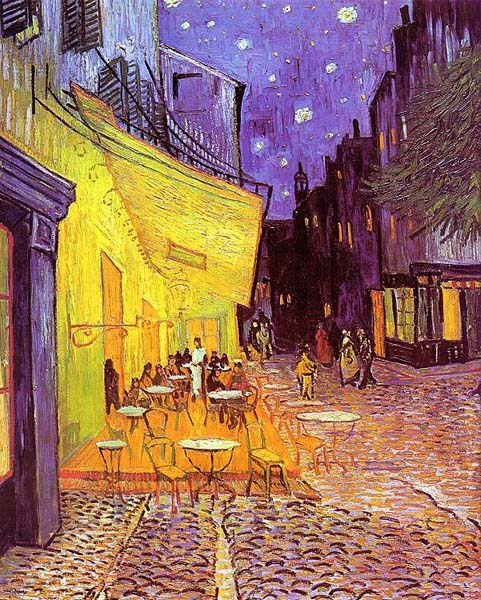| Revision as of 08:06, 28 May 2003 view source131.211.229.101 (talk)No edit summary← Previous edit | Revision as of 08:13, 28 May 2003 view source Dante Alighieri (talk | contribs)Administrators9,819 editsm fmtNext edit → | ||
| Line 33: | Line 33: | ||
| Other Dutch artists of his time: | |||
| ] | ] | ||
Revision as of 08:13, 28 May 2003
Vincent van Gogh (The last "g" prononounced like "ch" in Loch) (March 30, 1853 - July 29, 1890) was a Dutch painter.
Born on in Zundert, Netherlands, he died in Auvers-sur-Oise, near Paris, France.
Places where he lived:
- Arles, Bouches-du-Rhône, France;
- Saint Remy de Provence, Bouches-du-Rhône, France, where he was treated in the psychiatric center at Monastery Saint-Paul de Mausole.
He is generally considered the greatest Dutch painter after Rembrandt, though he sold only one painting during his lifetime: The Red Vineyard (1888). The painting is now on display in the Pushkin Museum in Moscow, Russia. Van Gogh produced all of his work during a period of only 10 years before he succumbed to mental illness and committed suicide. His fame grew rapidly after his death especially following a showing of 71 of van Gogh's paintings in Paris on March 17, 1901 (11 years after his death). As of 2002 the highest price ever paid for a painting was for Van Gogh's Sunflowers.
Van Gogh's influence on expressionism, fauvism and early abstraction was enormous, and can be seen in many other aspects of 20th-century art. The Van Gogh Museum in Amsterdam is dedicated to Van Gogh's work and that of his contemporaries. The Kröller-Müller Museum in Otterlo (also in The Netherlands), has a considerable collection of Vincent van Gogh paintings as well.
Several paintings by Van Gogh rank among the most expensive paintings in the world. On March 30, 1987 Van Gogh's painting Irises was sold for a record $53.9 million at Southeby's, New York. On May 15, 1990 his Portrait of Doctor Gachet was sold for $82.5 million at Christie's, thus establishing a new price record (see also List of most expensive paintings).
His Life
Vincents father was a protestant minister, a profession that Vincent found appealing and to which he would be drawn to a certain extent later in his life. Vincent started to work at art brokery Goupil. His brother Theo, with whom Vincent cherished a life long friendship, would join him there later. This friendship is amply documented in a vast amount of letters they sent each other. These letters have been preserved to this date. They provide a lot of insight into the life of the painter.
In 1876, when Vincent was 23 years old, Vincent left Goupil and began studying theology for a while. His ambition to become a priest was never fulfilled. He did however preach as a layman in Belgium in a poor region known as the Borinage, where mining was a major source of income. During this period he started to produce charcoal sketches. Ca. 800 paintings and ca. 850 drawings would follow.
For a brief period Vincent took paintings lessons from Anton Mauve (1838-1888), at The Hague in The Netherlands. Although Vicent and Anton soon split over divergence of artistic views, influences of the The Hague school of painting would remain in Vincents work, notably in the way he played with light and in the looseness of his brush strokes. However his usage of colours, favouring dark tones, set him apart from his teacher.
..will be completed soon
| File:Gogh1.jpg | File:Gogh2.jpg | |
| Selfportrait (1886-1887) | The Potato Eaters (1885) | |
| File:Gogh3.jpg | 
| |
| Sunflowers | Cafe Terrace at Night (1888) |
Other Dutch artists of his time: